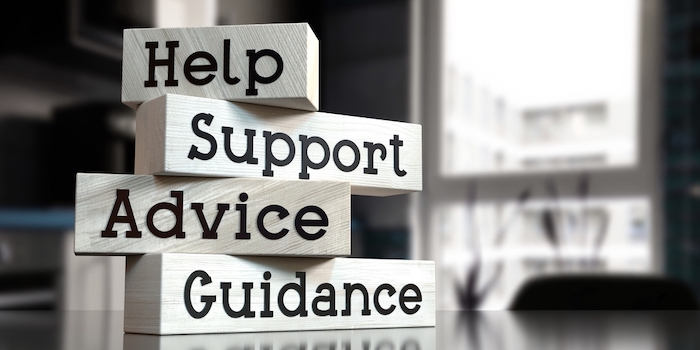The USPTO’s Updated Eligibility Guidance on AI Inventions
“While the new guidance document has been praised for its clarity and detail, and for encouraging innovation, there are still some challenges.”
On 17 July, the U.S. Patent and Trademark Office issued a 2024 Update Guidance on Patent Subject Matter Eligibility (SME), which included artificial intelligence (AI). This update complements USPTO’s February 2024 guidance on patent inventorship and AI assisted inventions. Executive Order 14110, “Safe, Secure, Trustworthy Development and Usage of Artificial Intelligence”, October 30, 2023, directed the creation of both documents. The order directs USPTO to promote innovation and clarify issues related to AI and Intellectual Property. The July Guidance Update explains the Supreme Court’s two-part framework called the “Alice/Mayo Test” and then discusses the application of this test to AI inventions. The Alice/Mayo question asks first whether a claim is directed at a law of natural phenomena, abstract idea, or a natural phenomenon: the so-called judicial exceptions to patent-eligible classes. If the answer to the first question is “yes,” then the second step of the inquiry considers whether there is an inventive concept present, such that the claim recites additional elements that amount to significantly more than the judicial exception.
The Guidance notes that this analysis can be challenging for AI inventions, because they may be classed in Prong One as an ineligible abstract idea, such as a mathematical concept, a method of organizing human activity, or a mental process. It gives numerous examples, both hypothetically and from recent Federal Circuit decisions, to illustrate how to apply two-prong Alice/Mayo to inventions involving an abstract idea. It also directs the reader to three new hypothetical SME examples (47-49) for AI inventions developed by the USPTO that show exemplary analyses of claims that are either directed to or incorporate an abstract idea.
Positive Aspects of the USPTO Guidance
The new guidance on SME and AI has some very positive features: it offers clarity, consistency, and encouragement in light of emerging technologies and innovation. The guidance is clear in that it provides useful instructions for distinguishing between claims that merely recite an abstract idea, and are therefore patent-ineligible and those that incorporate the abstract idea into practical applications. The guidance does not have legal force, but the discussion on how to apply the Alice/Mayo to claims that involve abstract ideas is based on recent Federal Circuit cases. The inclusion of three hypothetical, highly detailed patent claims involving AI inventions in Examples 47-49 is also very helpful. The examples were carefully crafted to show how different claims involving abstract ideas would be analyzed under the multi-step SME investigation under the Alice/Mayo Test. It is an “update”, in that it is a focus on the emerging technology in AI, but it is also designed to be consistent the USPTO prior guidance on SME. This was released in 2019, and incorporated into MPEP in 2020. Third, the Guidance document shows how the USPTO is encouraging innovation within the AI space, following the Executive Order. The Guidance emphasizes the importance of integrating AI into practical applications to secure patent eligibility, and it aims to accelerate AI innovation without restricting it, ensuring consistency and adding clarity specifically for AI contexts.
Negative Aspects of the USPTO Guidance
Although the new guidance has many positive features, it also has some drawbacks. The USPTO has created this document to provide clear and consistent guidance, while also being sensitive to nuance and complexity. The guidance may be too complex for some stakeholders to understand, especially when it comes to integrating abstract ideas into practical applications. Second, there may not be enough clarity regarding what constitutes “practical applications” if it is interpreted to broadly. This could lead inconsistent decisions on patent eligibility. It is also possible that the guidance may be better suited to certain AI technologies. This could make it difficult to apply it consistently across different AI technology. Some perspectives and action items for in-house patent counsel
A key piece of advice for drafting claims for AI innovations is to claim AI-specific technology advancements and practical application. AI inventions may be categorized as abstract ideas. This is one of three judicial exceptions to patent eligibility. Any patent claim relating to an abstract concept must include additional elements that are significantly more than just the abstract idea. The guidance states that “a claim that incorporates a legal exception into a practical use of the exception” will apply, rely upon, or use the judicial exemption in a way that imposes an meaningful limit on the exception. This means that patent claims must highlight specific technological advances and practical applications of AI. Claims should, for example, go beyond routine data-processing to demonstrate significant extra solution activity. Participating in public comment opportunities will help them stay informed about ongoing feedback and possible adjustments to the guidance. The comment period for SME guidance, including AI, was recently extended by one month and will now end on October 16, 2024. Finaly, patent professionals need to invest in training so they can understand and apply the updated guidance effectively. They should also develop checklists and internal resources to ensure compliance with updated eligibility criteria. The new guidance document, while clear and detailed, is not without its challenges. It is not clear how it will be applied consistently, for example. In-house patent counsel should proactively adapt to these changes to maximize the potential for securing patents in the evolving AI landscape.
Image Source: Deposit Photos
Author: 3d_generator






